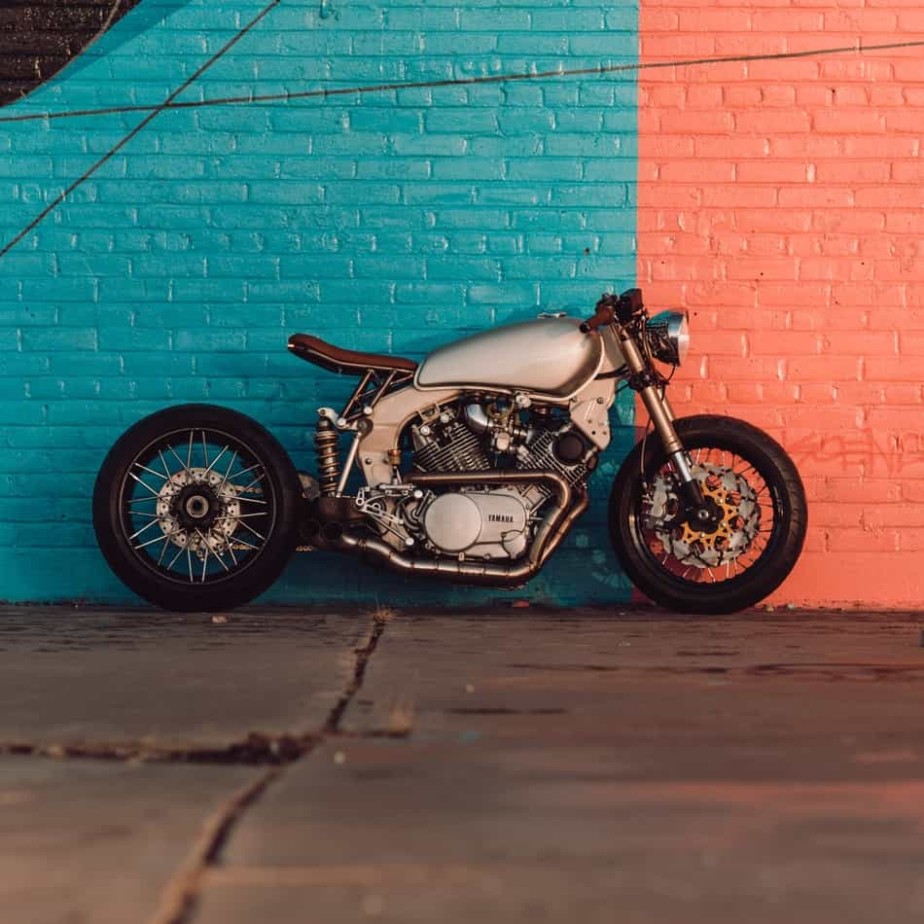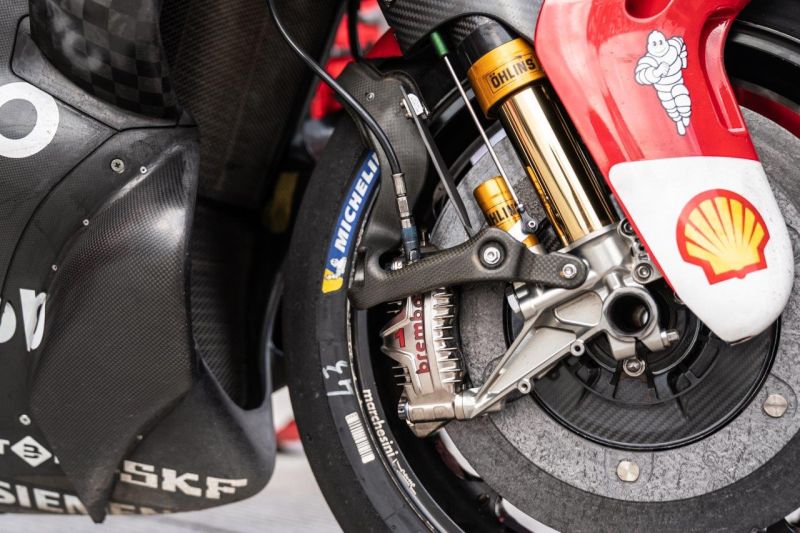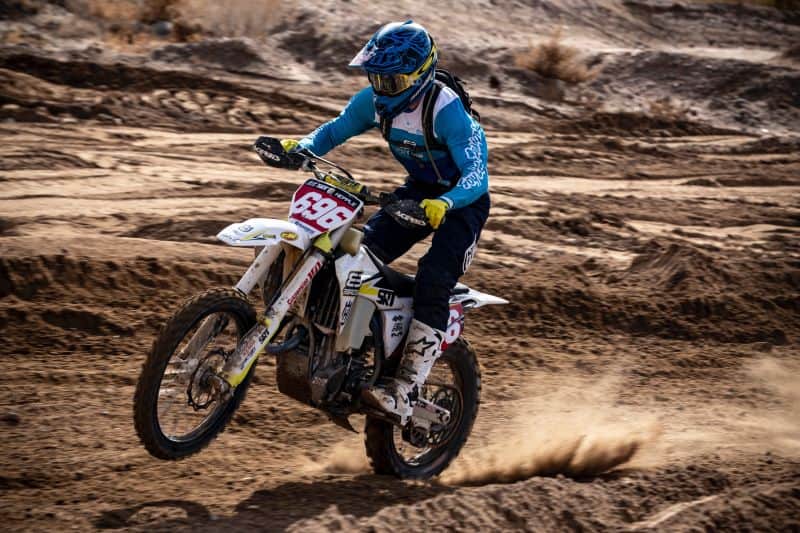
In this article, I will show some differences between street motorcycles and dirt bikes. While some of these distinctions can be seen with the naked eye, others are more obvious in terms of design and substance. Motorcycle enthusiasts adore the surge of excitement and the feeling of being outside when riding.
Engineers have spent years refining the many models of these motorcycles so that passengers can enjoy an exceptional performance. There are various subgroups of street and dirt bikes.
So, how are dirt bikes different from street motorcycles? Street bikes are larger and heavier than dirt bikes. The lighter, more compact frame of a dirt bike is the main reason for this. Dirt bikes are more manageable, but also more flexible. They are not as rigid because they are frequently made of hard polymers rather than metal.
Further in this article, I will show you the biggest differences between dirt bikes and street motorcycles, so stay with me if you want to learn more.
Table of Contents
What Is the Difference Between a Dirt Bike and a Street Bike?
The fundamental distinction between the two is that although dirt roads are appropriate for dirt bikes, streets are best for street bikes. The following differences are also covered:
1. Tires
A motorcycle’s tires will reveal the type of terrain it is intended for. Off-road tires are designed to increase traction on rough terrain. To help the bike dig deep into the sand, mud, and dirt, the tires are largely knobby with enormous blocks of space between them.
If you want to know The 10 World’s Fastest Motorcycles(Check This Out!!!), click here.
In addition, the tires have a carcass that is more flexible and a narrower profile. When you turn on a street and feel the tires wiggle, you can sense the bike’s knobby nature.
The contour of street tires is rounded and smooth, and there is not much room inside of them. To encourage a stronger grip on the surface, engineers make sure to expose as much rubber as possible on the road.
Note: The tread pattern on a street bike tire moves water away from the tire, but it serves little purpose in dirt, sand, or snow. Ratio percentages are frequently used in dual sport tires to indicate how skewed they are for off-road or on-road use.
2. Dimension and Weight
The two bikes are distinguishable from one another in a number of ways, but one of the most obvious is their difference in size. Dirt bikes are easier for riders to handle because they are often made with fewer features, are smaller, and have a simpler design.
If you want to know What Is the Best Way to Clean a Dirt Bike? (PRO TIPS!!!), click here.
A dirt path might be very difficult to ride on. A biker may occasionally even need to force themselves around some obstacles. Street bikes are less equipped to handle uneven terrain than dirt bikes, which have a single engine and a smaller displacement.
Note: Street bikes travel alongside bigger, heavier automobiles. It can be challenging to resist the drag from passing automobiles, which is why a more durable machine is required to keep the rider pretty grounded.
3. Seating Spot

The various seating postures required for riding the motorcycles might go unnoticed. When navigating obstacles on a dirt bike, the riders are frequently seen standing up if you watch a competition.
Note: In order to allow for quick and effective adjustments, the seats frequently lean forward. Since you’ll be standing up a lot while riding an off-road bike, you should sit up straight and put your feet immediately beneath you.
The seating posture on adventure bikes is comfortable for your wrists and back, which is one of the reasons they are so popular. Adventure bikes all have the same design. Sport bikes put your feet higher and backward to create greater lean inclinations in the corners. They also move you ahead into the wind.
If you want to know 13 World’s Fastest Dirt Bikes?, click here.
While ideal for off-road activities, this position can be difficult for extended amounts of time without the wind pressing up against your chest. A dirt bike’s handlebars are positioned closer to the body for improved visibility and control.
Street motorcycles have seats that are set back further to give the user more space to unwind. The rider’s joints experience no stress, and the spine is in a natural position. Riders can ride over a considerable distance despite frequently having to stop at traffic lights thanks to their comfortable position.
4. Suspension
Shock absorption is the focus of suspension. The looser the suspension, the more shock the bike will need to endure. Due to the fact that dirt bikes are required to ride over a wide variety of obstacles, they are designed with a suspension system that consists of spring shocks and hydraulic tubes in order to be able to withstand significant amounts of impact.
These motorcycles often have twelve inches or more of suspension travel.
Note: A rider may experience discomfort or possibly bottom out as they travel down the road if their bike has too much suspension.
Road bikes may make the ride comfortable while absorbing small bumps and irregularities. A few inches of suspension travel is typical so that the bike may get past small impediments like potholes.
5. Fuel Tanks
It is well known that a tank’s capacity increases with size. Long-distance travel necessitates large fuel tanks. Typically, dirt bikes do not travel long distances and have smaller gas tanks.
If you want to know Top 10 Best 600cc Motorcycles (Detailed Specifications!!!), click here.
A large tank would merely add unneeded weight to a dirt bike, which should ideally weigh as little as feasible. Road bikes have larger gas tanks because they are better suited for long-distance riding.
Note: Long distances are particularly well suited for traveling on street bikes. Scooters, on the other hand, are an unusual type of street bike because they only travel short distances.
6. Brakes

The front suspension compresses as a result of the force of braking, stopping the bike. Motorcycle speed and weight are directly associated with engine power. Street bikes often go at faster speeds and are bigger than other types of motorcycles.
If you want to know Dirt Bike vs ATV- Which Is Better? (What You Didn’t Know), click here.
Therefore, the bikes require a more potent braking system. Street bikes also benefit from better tire traction, which allows them to apply greater braking force to the surface. Because of the off-road terrain’s low traction, the brakes on a street bike will soon cause the tires to become locked up if the rider takes the bike off-road.
The braking rotors on dirt bikes are often smaller, and some of them may just have only one disc up front.
CAUTION!!!: On bikes, the front brake normally provides the majority of the braking force, but on a muddy road, you might use the rear brake more.
7. Clutch
Street bikes are made to go smoothly at motorway speeds and, with a moderate throttle delivery, can even reach triple digits. Riders on street bikes typically do not need to slip the clutch.
When you upshift, you’ll probably let the clutch out for a brief moment, and you might utilize it to downshift along with blipping the throttle.
If you want to know Can You Buy a Motorcycle Without a License?(You Must Know!), click here.
Riders on dirt bikes frequently use the clutch because they want to stay in the same gear and use it to raise revs.
Note: In order to navigate at low speeds, which are frequently required for dirt riding, it is much simpler to keep the throttle constant and use the clutch to manage the drive to the wheels rather than shifting through the gears.
8. Gearing

Road bikes are often designed to travel at motorway speeds with ease and are capable of reaching triple digits with a strong throttle application.
Even street-legal dirt motorcycles are built to apply the best torque in lower ratios to accelerate to the top of steep slopes and to dig themselves out of muck and sand.
Since the manufacturers presume that you want to be able to cruise down the highway, the final gearing is frequently the only meaningful difference between a street-legal bike and an off-road one.
9. Chassis
As previously discussed, a lighter and smaller frame helps dirt bikes to be smaller than their on-road equivalents. To keep them flexible and simple to operate, they are frequently composed of hard polymers.
Metal is used to create street bikes so they are strong and robust. Additionally, street bikes are more stylish, and metal enables a wide variety of looks.
10. Steering
In order to control a street bike, you don’t need to use a lot of steering. When riding a sports bike, it is impossible to even fool around with the handlebars for very long before coming into contact with the fuel tank.
If you want to know Top 10 Off-Road Dirt Bikes (Things You Didn’t Know!!!), click here.
Large steering inputs are only useful while negotiating traffic or moving slowly through a parking lot. On a road bike, turning is frequently accomplished by simply leaning in the desired direction, making turns simple.
Dirt bikes will also require you to lean, but for the majority of the trip, you will likely be navigating ruts and using the handlebars. Wide bars are installed on dirt bikes in order to increase leverage and the ability to turn the tire considerably farther from one side to the other.
Note: Dirt bike riders frequently utilize the handlebars and plant their feet to stabilize the balance of the bike.
Conclusion
The experiences of motorbikes riding on dirt and paved roads are very different. Street and dirt bikes are built using the same physical principles, but they are tailored differently for the various surfaces they are used on.
Also fundamental operations like slowing, clutch engagement, throttle use, accelerating, and bending into curves have varied designs.
While it is possible to ride a dirt bike similarly to how you would a street bike, doing so is not recommended.
The handlebars of dirt bikes are typically flatter and taller. They have more ground clearance since it’s crucial for riders to have a clear view of their surroundings.
The tires are designed to dig into the ground and kick anything in their direction rather than sticking to it.
Thanks to the forward-leaning chairs, riders frequently stand while riding. In contrast, street bikes are heavier for stability and durability. Street bikes must be more grounded because they share the road with larger vehicles.
In order to contribute to their style and stability, they are fashioned of metal. In addition, there are bikes on the market designed specifically for commuting and exploring.
